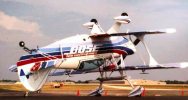I know you can do an approach on a closed runway, as an example when you are circling to land. But if the whole airport is closed by NOTAM from X time to Y time can you do a low approach during the time it's closed?
Not closed for noise restrictions, closed because it's middle of nowhere.
Not closed for noise restrictions, closed because it's middle of nowhere.



